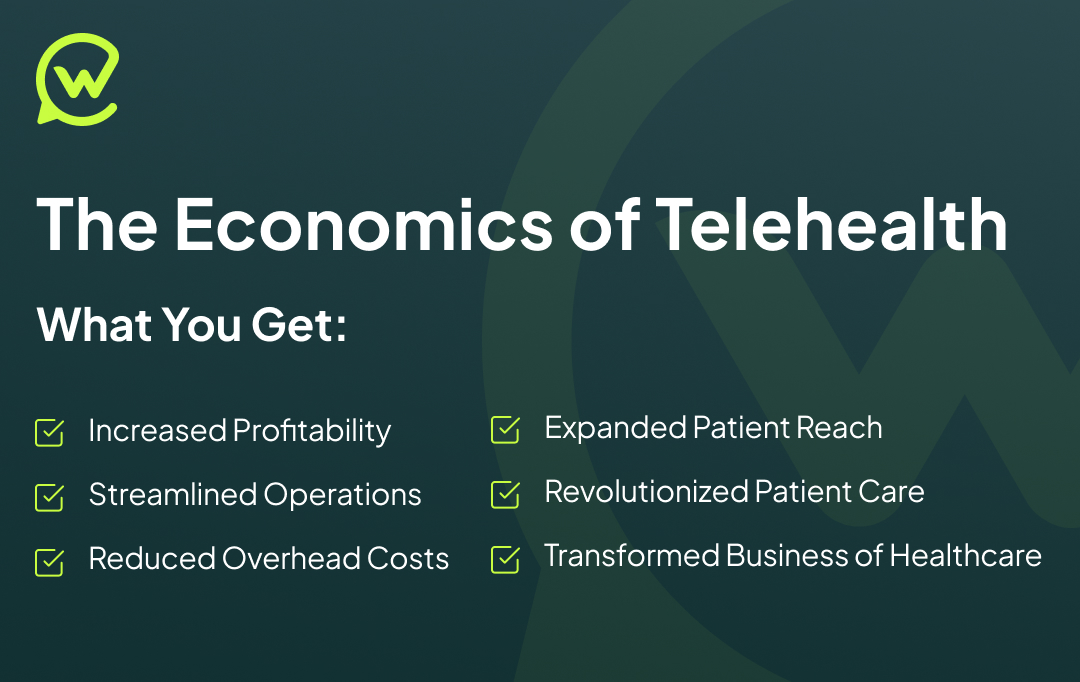
Economic Benefits of Adopting Virtual-first Healthcare
In the modern healthcare landscape, the shift toward a virtual-first approach is not just a technological evolution but also an economic revolution. As healthcare providers and institutions grapple with rising operational costs and the need for efficient service delivery, virtual-first healthcare emerges as a financially viable and sustainable solution. Platforms like WellSync are at the forefront of this transformation, offering tools and services that not only enhance patient care but also drive economic benefits.
Cost Savings through Virtual-first Healthcare
One of the most immediate benefits of adopting a virtual-first approach is the significant reduction in operational costs.
Reduced Overheads
Physical infrastructure, from clinic spaces to utilities, contributes to a substantial portion of healthcare costs. Virtual consultations can drastically reduce the need for physical spaces, leading to savings on rent, utilities, and maintenance.
Efficient Resource Allocation
With virtual-first healthcare, providers can optimize their schedules, reducing downtime and ensuring that resources, both human and technological, are utilized efficiently.
Decreased No-shows and Cancellations
Missed appointments can be costly. Virtual consultations, given their convenience, often see higher adherence rates, ensuring that providers’ time is used productively.
New Revenue Streams with Virtual-first Models
Beyond cost savings, virtual-first healthcare opens up new avenues for revenue generation. Mercer highlights that over half (52%) of virtual-first health plans will offer virtual behavioral health care, and 40% will offer a virtual primary care physician network or service.
Expanded Patient Reach
Providers are no longer limited by geographical constraints. They can cater to patients from diverse locations, expanding their patient base and, by extension, their revenue potential.
Flexible Service Offerings
With platforms like WellSync, providers can offer a range of services, from consultations to remote patient monitoring, creating multiple revenue streams.
Subscription Models and Packages
Virtual-first healthcare allows providers to introduce subscription models or bundled service packages, ensuring consistent revenue and enhanced patient loyalty.

Broader Economic Impact of Virtual-first Healthcare
The economic benefits of virtual-first healthcare extend beyond individual providers or institutions.
Boost to Telehealth Tech Industry
The rise of virtual-first healthcare has spurred growth in the telehealth technology sector, leading to job creation and innovation.
Enhanced Patient Productivity
By reducing the need for physical visits, patients save time and resources, leading to increased productivity and reduced economic losses due to health-related absences.
Economic Healthcare Democratization
Virtual-first models can make healthcare more affordable and accessible, leading to a healthier population and, in the long run, reduced economic burdens related to healthcare.
Embracing the Economic Potential with WellSync
Platforms like WellSync are not just tools; they’re economic catalysts. By offering a suite of services tailored for virtual healthcare, they empower providers to realize the full economic potential of this model. From cost savings to revenue generation, the financial advantages are manifold.
The Future is Virtual and Economically Viable
As the healthcare industry evolves, economic sustainability becomes paramount. Adopting a virtual-first approach, backed by platforms like WellSync, offers a path to financial viability without compromising on patient care. For providers looking to future-proof their practice, now is the time to embrace the economic benefits of virtual-first healthcare.


